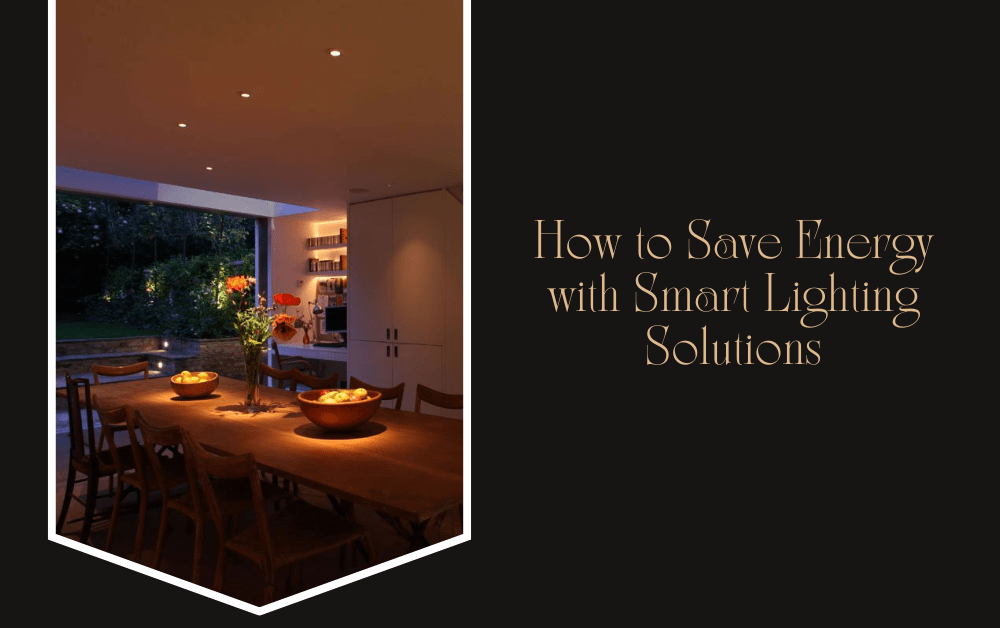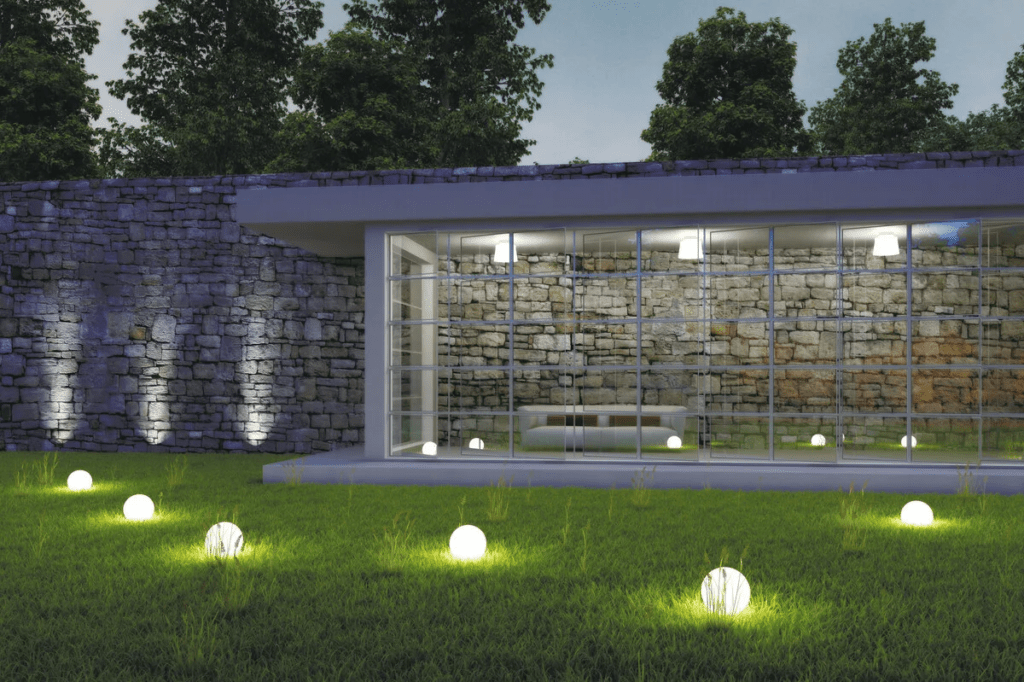How to Save Energy with Smart Lighting Solutions

In an era where energy conservation is more important than ever, smart lighting solutions have emerged as a game-changer for homeowners and businesses alike. By offering advanced technology that goes beyond simple on-off switches, smart lighting provides an efficient way to manage energy consumption while enhancing the comfort and aesthetics of any space. This guide will walk you through how smart lighting can help you save energy, reduce costs, and make your environment more eco-friendly.
What Are Smart Lighting Solutions?
Before diving into how smart lighting can save energy, it’s important to understand what it is. Smart lighting refers to a lighting system that can be controlled remotely or automatically using various technologies, such as Wi-Fi, Bluetooth, or Zigbee. These systems often integrate with smart home devices, like smartphones, tablets, or voice-activated assistants (e.g., Amazon Alexa, Google Assistant).
The key features of smart lighting include:
- Remote Control: Control your lights from anywhere using a mobile app.
- Automation: Set schedules or use sensors to automate when lights turn on or off.
- Dimming Options: Adjust the brightness to suit your needs and save energy.
- Integration: Seamlessly integrate with other smart home devices for a cohesive system.
Note :- Looking to upgrade your space with energy-efficient smart lighting? Trust the experts at Star Facade Lighting, a leading Dubai lighting company. Whether you’re revamping your home or business, there innovative lighting solutions will help you save energy while enhancing the beauty and functionality of your space. Contact star facade lighting today to discover how they can illuminate your world!
The Energy-Saving Potential of Smart Lighting

Smart lighting solutions offer multiple avenues for energy conservation. Here’s how:
1. Automation and Scheduling
One of the biggest advantages of smart lighting is the ability to automate when your lights turn on and off. Traditional lighting systems rely on manual control, which often leads to lights being left on when they’re not needed. With smart lighting, you can set schedules based on your routine. For instance, you can program the lights to turn off when you leave for work in the morning and turn on when you return home.
In addition to daily schedules, smart lighting systems can adjust to seasonal changes. For example, during the shorter days of winter, your lights can be programmed to turn on earlier, ensuring you never come home to a dark house. Conversely, during the longer summer days, you can set your lights to turn on later, reducing unnecessary energy consumption.
2. Motion Sensors
Motion sensors are another powerful tool for saving energy with smart lighting. These sensors detect movement in a room and automatically turn lights on or off based on occupancy. This is especially useful in areas of the home that are not frequently used, such as basements, garages, or guest rooms.
For businesses, motion sensors can be installed in offices, conference rooms, and restrooms to ensure that lights are only on when these spaces are in use. This not only saves energy but also reduces wear and tear on lighting fixtures, extending their lifespan.
3. Dimming Capabilities
Dimming your lights is an effective way to reduce energy consumption. Many smart lighting systems offer customizable dimming options, allowing you to lower the brightness to the perfect level for any activity. Whether you’re watching a movie, reading a book, or having dinner, dimming the lights can create the right ambiance while using less electricity.
Dimming capabilities also come in handy during daytime hours. Natural light can be supplemented with minimal artificial light, further reducing energy use. Some smart lighting systems even adjust automatically based on the amount of natural light available, ensuring that your lights are only as bright as necessary.
4. Energy-Efficient LED Bulbs
Most smart lighting systems use LED bulbs, which are inherently more energy-efficient than traditional incandescent or fluorescent bulbs. LED bulbs use up to 80% less energy and last significantly longer—up to 25,000 hours or more compared to just 1,000 hours for incandescent bulbs.
The combination of LED technology with smart lighting controls maximizes energy savings. For example, LED bulbs are compatible with dimmers and do not lose efficiency when dimmed, unlike some other types of bulbs. This makes LED-based smart lighting a perfect choice for anyone looking to cut down on energy costs.
5. Zoning and Grouping
Smart lighting systems allow you to create zones or groups of lights that can be controlled together. This means you can turn off all the lights in a specific area, like the living room or kitchen, with a single command.
For larger homes or businesses, zoning ensures that lights are only on in the areas that are being used, eliminating wasted energy in unoccupied spaces. Grouping also enables you to create scenes—pre-set lighting configurations that suit different activities, such as “Dinner Time,” “Movie Night,” or “Work Mode.” These scenes can be activated with a single voice command or tap on your smartphone, optimizing energy use without sacrificing convenience.
How to Implement Smart Lighting for Maximum Energy Savings
Now that you understand the energy-saving potential of smart lighting, let’s look at how to implement it effectively.
1. Start with High-Traffic Areas
Begin by installing smart lighting in areas where lights are frequently used, such as the living room, kitchen, or main hallways. These are the spaces where you’ll see the most immediate benefits in terms of energy savings.
For businesses, prioritize areas like the lobby, conference rooms, and offices. These are often the spaces with the highest energy usage, so upgrading to smart lighting can significantly reduce costs.
2. Incorporate Motion Sensors
Next, add motion sensors to areas where lights are often left on unnecessarily. In homes, this might include closets, bathrooms, and laundry rooms. For businesses, consider installing motion sensors in restrooms, storage areas, and meeting rooms.
Motion sensors can be integrated into existing lighting systems or purchased as part of a complete smart lighting package. Make sure to adjust the sensitivity and delay settings on the sensors to match the specific needs of each space.
3. Use Smart Plugs and Switches
If you’re not ready to replace all your bulbs with smart ones, consider using smart plugs or switches. These devices allow you to control standard bulbs remotely and automate their operation without the need to purchase new fixtures.
Smart plugs are especially useful for lamps and other portable lights, while smart switches work well for overhead lighting. Both options provide a cost-effective way to dip your toes into the world of smart lighting while still reaping energy savings.
4. Set Up Voice Control and Automation
Once your smart lighting system is in place, integrate it with your smart home assistant (like Amazon Alexa, Google Assistant, or Apple HomeKit) for voice control. This makes it easy to adjust lighting settings on the fly without needing to open an app.
Automation is another key feature to explore. Set up routines that align with your daily schedule, such as turning off all lights when you say, “Goodnight,” or activating a “Welcome Home” scene when you arrive back from work. These routines not only save energy but also enhance your comfort and convenience.
5. Monitor Energy Usage
Most smart lighting systems come with energy monitoring features that allow you to track how much electricity your lights are using. Use this data to identify patterns in your energy consumption and make adjustments as needed.
For example, if you notice that certain lights are using more energy than expected, you might adjust their schedules or dimming settings to reduce usage. Over time, these small adjustments can lead to significant energy savings.
Benefits Beyond Energy Savings
While the primary focus of smart lighting is energy conservation, there are additional benefits that make these systems a worthwhile investment:
1. Enhanced Security
Smart lighting can improve the security of your home or business. Automated lighting schedules can give the appearance that someone is home, even when you’re away. This can deter potential intruders.
Some smart lighting systems also integrate with security cameras and sensors, allowing lights to turn on automatically if motion is detected outside your home or office.
2. Improved Mood and Productivity
Lighting plays a crucial role in setting the mood and boosting productivity. Smart lighting allows you to adjust the color temperature and brightness to suit different activities. For example, cooler, brighter lights can be used to enhance focus during work hours, while warmer, dimmer lights can create a relaxing atmosphere in the evening.
For businesses, the ability to control lighting can lead to a more comfortable and productive work environment. Studies have shown that well-lit spaces can improve employee mood, reduce eye strain, and increase overall productivity.
3. Environmental Impact
By reducing energy consumption, smart lighting contributes to a lower carbon footprint. This is not only good for your wallet but also for the planet. The widespread adoption of smart lighting could significantly reduce the overall demand for electricity, leading to fewer greenhouse gas emissions and a more sustainable future.
Choosing the Right Smart Lighting System
With so many smart lighting options available, it’s important to choose a system that meets your specific needs. Here are some factors to consider:
1. Compatibility
Make sure the smart lighting system you choose is compatible with your existing devices and smart home ecosystem. Check whether the bulbs, switches, and sensors work with your preferred voice assistant or home automation platform.
2. Ease of Installation
Consider how easy it is to install and set up the system. Some smart lighting solutions require professional installation, while others are DIY-friendly. If you’re not comfortable with electrical work, opt for systems that offer simple plug-and-play options.
3. Cost
Smart lighting systems vary widely in price. Determine your budget and look for options that offer the best value. Keep in mind that while the initial investment might be higher than traditional lighting, the long-term energy savings and other benefits often justify the cost.
4. Features
Think about the features that are most important to you. Do you need color-changing bulbs, or are you primarily interested in energy efficiency? Do you want extensive automation options, or are you looking for something more basic? Choose a system that aligns with your priorities.
Conclusion
Smart lighting solutions are a powerful tool for saving energy
and enhancing the comfort, security, and efficiency of your home or business. By automating lighting schedules, using motion sensors, and incorporating energy-efficient LED bulbs, you can significantly reduce your electricity consumption and lower your utility bills.
As smart lighting technology continues to evolve, the potential for even greater energy savings and environmental benefits will only increase. Whether you’re a homeowner looking to reduce your carbon footprint or a business aiming to cut costs, investing in smart lighting is a step in the right direction.
With the right strategy and implementation, smart lighting can transform the way you use energy—making your space not only more efficient but also more enjoyable to live and work in. Start small, explore your options, and soon you’ll see the bright benefits of going smart.
Note :- Read more related blogs at https://hellos.blog/